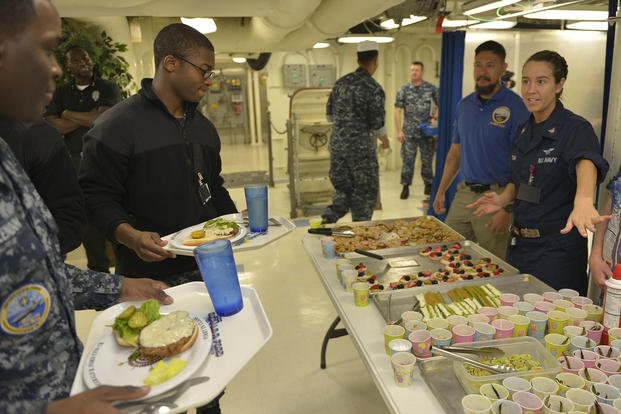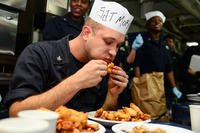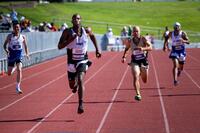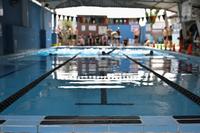When and what to eat are constant questions that affect your fitness and health goals as well as your weight-loss desires.
I recently was asked a question by email that asked, "What should I eat/drink before, during and after my workout? I am 40 years old, and my goal is to look better and be healthier. I need to lose weight, in other words."
The answer will vary, depending on your goal, but understanding the After, Before and During (ABD's) of Workout Nutrition will better help someone reach their personal goals. I saw the "ABD's of Nutrition" at a presentation by Paul Moore of Fitness4 Pros at a recent Mid-Atlantic National Strength and Conditioning Association regional conference and thought it was a brilliant way to discuss nutrition throughout the training cycle.
This understanding of what foods and drinks work best for fat loss and health gains requires a constant search for the individual. Here are some suggestions that will help you figure out what and when to eat, as it all depends on your individual likes, dislikes and goals.
If you are trying to drop some unwanted pounds and get healthy, proper nutrition and a well-arranged workout plan are vital to achieving that goal. You have to experiment with the types of exercise that will create a good caloric burn, as well as find sources of lower-calorie foods that work best for your energy level.
Keep track of how you feel during workouts, whether they are higher-intensity resistance training or lower-intensity cardio; these typically will measure if you are eating enough quality foods. If you have significant weight (40 pounds or more) to lose, try some non-impact cardio options like biking, elliptical gliders, swimming, aqua jogging, rowing, etc. See Non-Impact Options for some workout ideas.
The Fat-Burning Workout
If your goal is to burn fat, your workout should get you into a fat-burning zone by the time you are finished exercising for the day. The arrangement of your workout should be calisthenics or weights first, followed by steady, aerobic cardio of your choice. Basically, go hard the first half of your workout and burn your blood sugar (anaerobic activity burns glycogen) as your prime energy source first.
This can take about 15-20 minutes of intense work, depending on the amount of food you have eaten before the workout of the day. Once you are feeling burned out from that section of anaerobic activity, it is now time to go aerobic and get into fat-burning mode. The best fat-burning time is immediately after waking but before having any food.
After a Workout
Here is where you can stay in fat-burning mode a little longer. If you delay eating carbs immediately after your workout for another 30-60 minutes, you will be fine and actually still be using fat as your primary energy source.
Throughout the next several hours of the day, your metabolism will be higher, thus burning more calories than having not exercised that morning. After a while, you will need to eat good carbohydrates (fruits and vegetables) and a serving of protein to recover from the workout. Limit the carbs in a day and try to eliminate sugar.
Find what carbohydrates and proteins work best for you and your energy requirements for the day. Supplements tend to come into play during the post-workout nutrition game. I am not personally into supplementing daily, other than some omega-3 and omega-6 capsules and some multivitamins rich in all the B vitamins.
For a quick fix and to replace food in a pinch, I will take some whey protein powder in milk. You still need to prepare for the next workout session by eating something, even though you are trying to lose weight.
Related article: Which First - Resistance Training or Cardio Exercise?
Before a Workout
If you are working out to lose weight and get healthier, depending on your workout intensity, you may not need to have a pre-workout meal. If your goal is to get into fat-burning mode, the fewer carbs you eat before a workout will decrease the amount of time and effort required to get into that fat-burning/low glycogen mode).
If you like to work out immediately after you wake up, you are at your lowest in blood sugar for the day. Now is the time to take a short burst of intense exercise, then follow it with what I call conversational pace cardio. If you can talk and be a little winded, you are in a prime fat-burning zone.
During a Workout
Unless you are working out for extended periods to get used to 8-10 hours of training at Special Operations School, food intake during normal hourlong (or shorter) workouts is not needed. Just drink water to stay hydrated and if you are sweating profusely in the humid, summer heat. If sweating profusely, you should follow with a serving or two of electrolytes to replace what you lose while sweating.
Multigrain breads and pastas, brown rice, cereals and good carbs like vegetables (romaine lettuce, broccoli, asparagus, carrots) and fruits (tomatoes, strawberries, apples, berries, oranges, grapes and bananas ) make great carbohydrates for energy. Stay away from white breads, pastas, rice and any flour-baked products. Sugar is your killer. Replace sugar drinks with water and unsweetened drinks if you can or seriously limit them.
Meats, fish, chicken, eggs, nuts, almonds, beans, milk, milk shakes with additional whey protein powder (optional) and peanut butter are solid protein options. I eat boiled eggs and salads between meals during snack time or have a few servings with a main course of meat or fish for a good balance of plant and animal protein.
Here are some fat options: fish, nuts, olive oils and omega-3 fortified products (milk, margarine, peanut butter). I typically get most of these fats from nuts and fish, but I also supplement the omega-3 fatty acids most important to longevity and healthy recovery.
Any group who works out needs to hydrate during workouts to stay cool and avoid overheating and dehydration, especially during excessively sweaty workouts. You also need to add electrolytes (sodium potassium, magnesium, calcium). Foods rich in many of these elements are essential to your recovery from significant water and electrolyte loss.
If I can wring out my shirt after a workout, I will add more of these "salts" into my post-exercise diet. Sure, you can add sports drinks but stay away from the extra sugar and electrolytes if you are not sweating.
Sports drinks with sodium, potassium and carbohydrates (sugar) are a safe bet for hydration during hard sweaty exercise. But if you are not sweating profusely, there is little need for these sports drinks during exercise, unless you are in a desert environment where you do not sweat. Bananas and water are also sufficient in most cases.
Here are some ideas for hydration:
After workouts, one of my favorite post-exercise snacks is a can of chicken noodle soup. It is loaded with potassium, sodium, carbs and protein; has about 3-4 times the potassium of a banana; and contains about 5-6 times the potassium of Gatorade. If you are not sweating much or are not in an arid environment, water should be enough to hydrate you.
Before workouts, do not drink too much if you are doing significant running. The bouncing potentially will cause cramping.
During workouts, sip water or a carbohydrate/electrolyte mix every 10-15 minutes to maintain high-intensity performance training.
A ballpark equation for the daily consumption of liquids for a highly active person is: 50%-75% of body weight in pounds = ounces per day of H2O.
Finding the right mix of carbohydrates, protein, fats, electrolytes and water depend on your age, sex, weight, activity level and goals. Whenever you have a killer good workout or test scores and feel great afterward, make a note of everything you did that day. Very often, it is the formula that works best for you and your fitness performance goals.
Good luck with your nutrition and performance fitness program, and I hope you see improvement soon. Workouts can be obtained easily at the Military.com Fitness Ebook Store. Send me an email, and I may post it up as an article next week. You can contact me at stew@stewsmith.com.
Stew Smith is a former Navy SEAL and fitness author certified as a Strength and Conditioning Specialist (CSCS) with the National Strength and Conditioning Association. Visit his Fitness eBook store if you're looking to start a workout program to create a healthy lifestyle. Send your fitness questions to stew@stewsmith.com.
Want to Learn More About Military Life?
Whether you're thinking of joining the military, looking for fitness and basic training tips, or keeping up with military life and benefits, Military.com has you covered. Subscribe to Military.com to have military news, updates and resources delivered directly to your inbox.



















